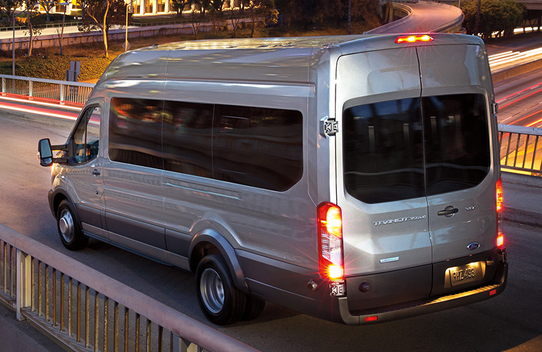Ford is experimenting with its own Uber-like app
Courtesy of Washington Post By Emily Badger: The rise of Uber does not bode well for car-makers. The ride-hailing service, and other apps like it, have made it increasingly easy in major cities to get around town without owning a car.
They promise the convenience of personal cars without the monthly car payment, the speed of car travel without the hassle of parking when you arrive. They’ve taken advantage of — and no doubt contributed to — an underlying shift that could deplete an entire generation of city-dwelling car-buyers: Younger would-be drivers just aren’t as interested as their parents were in owning their own cars.
So what do you do if your century-old business model relies on making and selling vehicles? Well, this: Ford is trying to develop its own Uber-like “ride-sharing” app with a twist that only an automaker can bring to this rapidly shifting market — Ford is also working on a vehicle to go with it. Not a theoretical autonomous car, as Uber has fantasized (and begun researching with Carnegie Mellon). But a more achievable, legal-today ride-sharing shuttle that could be tested on the streets of London later this year.
“There is a white space for a new product,” says John Abernethy, project lead for the Advanced Product Group at Ford Motor Company based in Britain. “Between a taxi and a bus is a space for something else.” Ford is still figuring out exactly what that something — a vehicle plus app — looks like. Like Uber, but with bigger vehicles? Like public transit, but without fixed routes? Like the airport Super Shuttle, minus the endless meandering all over town to cram in a dozen more people? The concept, which Ford is calling a “dynamic social shuttle,” is one of two-dozen experiments the company announced last month, as it tries to pivot away from a focus on solely manufacturing vehicles to thinking more broadly about “mobility.”
So this a bit more like R&D than an full-fledged product launch. But, Abernethy says, “this is a really serious proposition.” The project further blurs the lines between automakers, tech startups, transit agencies, cab companies and everyday drivers. Its ride-sharing service could be faster than the bus, Ford says, but cheaper than UberX.
It’s unclear, though, if the automaker would ultimately compete directly with either one, or if it can burrow a truly new niche in between them. It’s also unclear who the final customer would be. If Ford manages to develop its own ride-sharing app and a vehicle specifically designed for it, it could potentially market both to municipalities or transit agencies looking to offer more nimble alternatives to the bus.
Or perhaps private firms that would be more akin to cab companies might franchise a fleet of Ford ride-share shuttles. Or maybe individual consumers will ditch the app and buy these vehicles for use with Uber. Abernethy says that last scenario is not the idea, at least for now.
Ford wants to take the app seriously, too. “Part of the experiment is to establish exactly that,” he says of what the ultimate market for all this might look like, along a spectrum from private vehicle owners to public agencies. “Within that range, we want to learn ‘what is the right role for this type of service?'” For the last eight months, Abernethy’s group has been working on both the system that would match riders and vehicles through an app, and the concept for the vehicle.
For now, the group is weighing modifications to an existing model, the suggestively named Ford Transit, a commercial cargo van of varying sizes capable of carrying eight to 15 people. In the company’s vision, passengers would request a ride through the app in much the same way you can with Uber or Lyft. A kind of “premium mini-bus” would then arrive on demand and take you to your destination, collecting and dropping off other passengers along the way with similar routes.
The underlying idea is essentially Uber-squared: It requires a sophisticated system to not only match passengers to nearby vehicles, but to match passengers to each other so that an entire chained trip becomes as efficient — and tolerant to passengers — as possible.
Uber has begun to experiment with its own take on this idea, called UberPool. But because Uber relies on everyday drivers in their personal cars, most vehicles could never transport more than three passengers at a time.
Ford is picturing something that inches closer to a bus in scale, although the precise scale is one of the central questions it’s now trying to resolve. The answer is a matter of both optimizing the entire system (how many people would you need in each car to provide on-demand service to a whole city?) and satisfying individual riders (how many fellow passengers will they put up with?).
“People are willing to get into a subway or a mass transit system and press up against strangers, because that’s the expectation, although they might not enjoy it,” Abernethy says. “You wouldn’t get into a vehicle this size and do the same thing.”
Ford wants to figure out not just the right number of seats in a ride-sharing vehicle, but the right amount of space for each person in it. If the vehicle has too many seats, meanwhile, that affects how passengers think about the service they’ll get. Board a 12-passenger Super Shuttle, for instance, and you know you could be in for a long ride. “People recognize the more they share, the more value they may get out of the service,” Abernethy says.”But there’s a limit to how many people they’re willing to share with. You have to get that balance of efficiency, convenience and cost.”
Then there are major logistical questions around making any service work that aspires to transport multiple passengers, each on a moment’s notice, to multiple destinations: How much do you have to charge to lure a critical mass of riders? Do you charge by the mile, like a cab, or per ride, like a bus? Does the resulting network work best for short trips, or can it accommodate rides all the way across town?
The underlying idea is not unlike a kind of transportation that already exists in many developing-world cities, albeit without the high-tech. In other countries, mini-buses that occupy a gray world between public and private transportation go by many names: jitneys, matatus, “informal” transit. Abernethy says that Ford is aspiring to something more than a WiFi-enabled jitney. T
he company is also developing the “dynamic social shuttle” with New York and London in mind, not the developing-world markets where this idea would look more familiar. The implications for more rural communities in the U.S. — often beyond the reach of traditional transit — could be valuable, though. The project may, in the end, lead nowhere.
And it’s hard to imagine that an automaker can do a better job at developing a ride-sharing app than billion-dollar companies that have invested five or six years in doing solely that. But it’s revealing that Ford wants to try. “Success will be the learning in itself,” Abernethy says, “and hopefully we will generate new business ideas out of it, or at least shape our future thinking.”
Emily Badger is a reporter for Wonkblog covering urban policy. She was previously a staff writer at The Atlantic Cities.
Category: Hybrids, Mass Transit













